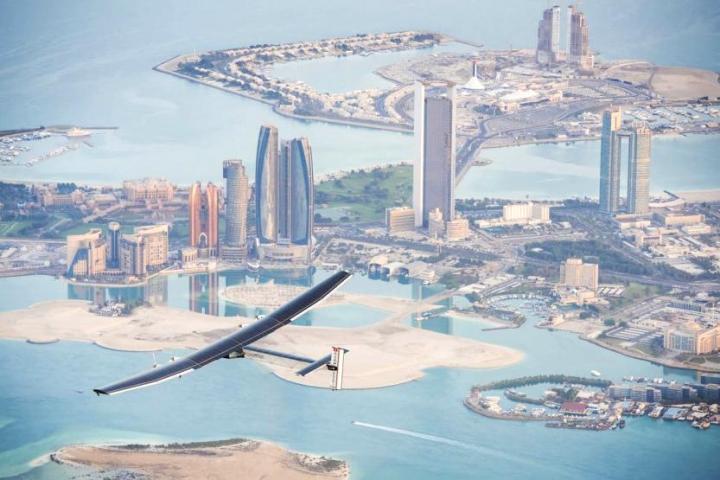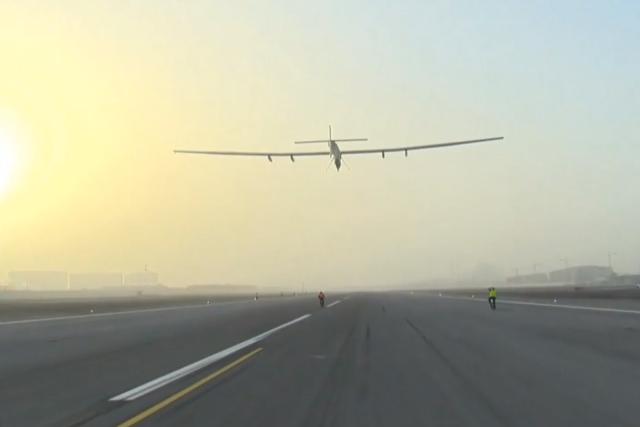
After a delay of about an hour due to a technical hitch, the Swiss-engineered Solar Impulse 2 plane got off the ground without incident.
At 72 meters (236 feet), the wingspan of the single-cabin plane is wider than that of a Boeing 747. More than 17,000 solar cells spread across its wings power four electric motors to keep the 2,300-kg machine flying.
Mammoth journey
The 21,747-mile (35,000 km) journey, which is expected to take around four months, will be split into 12 legs, with the first one a relatively short hop (260 miles/420 km) to Muscat in Oman, where it’s scheduled to arrive later on Monday. However, some of the flights, such as those across the Atlantic and Pacific, are set to last almost six full days with the plane reaching heights of up to 8,500 meters (28,000 feet).

Two Swiss pilots – Bertrand Piccard and André Borschberg – will take turns behind the plane’s controls, with Borschberg kicking off the record attempt in Abu Dhabi.
The experience will push the pilots to the limit both physically and mentally. Cooped up inside a cockpit just 3.8 cubic meters in size, the necessity to constantly monitor the plane’s instruments means sleep can only be had in 20-minute naps. And being strapped into the seat the whole time means no trips to the bathroom. That’s right, the seat doubles as a toilet.
Green energy
The project, which is aimed at promoting green energy, has already broken a number of records, including in July 2013 when Solar Impulse 1 became the first solar-powered plane capable of flying day and night to cross the U.S.
After Oman, Solar Impulse 2’s subsequent legs will include flights to India, Myanmar, China, the U.S., and southern Europe or North Africa (depending on weather conditions) before finally returning to Abu Dhabi in about four months. Total flying time will be in the region of 500 hours.
“The airplane is special not because it is solar, but because it is efficient,” Piccard told National Geographic recently. “It is efficient at harnessing energy, at storing energy, and at using energy.”
In an earlier interview, Piccard said Solar Impulse is “not an industry that’s planning to put solar airplanes on the market.”
The main aim, he said, is to demonstrate how exciting the new technology can be in helping to protect the environment and reduce dependency on fossil energy.
It’s hoped that many of the technologies developed during the Solar Impulse project can be “implemented in daily life, for cars, or for heating systems or for the construction of houses. All the technology exists, we should use it much more in our daily life,” the Swiss pilot said.
To learn more about Solar Impulse, or to check the plane’s current location on its global trip, head over to the project’s recently revamped website here.


